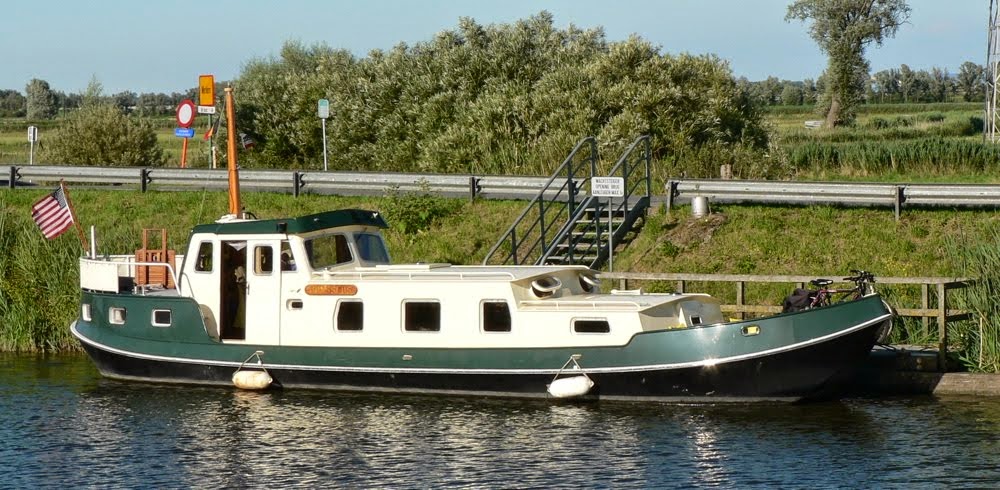There was also a nearby gas station. A word about the fuel situation. Until last year, Belgium offered red-dyed diesel for boats. It was free of road taxes and much cheaper than undyed road fuel. Once the distinction was eliminated, waterfront fuel mostly disappeared and now about the only way to get fuel for the boat is by truck from the dock or jerry cans on a hand truck from a close-by gas station. Luckily we don't use much fuel, about 2 1/2 litres an hour, so refueling hasn't been much of a problem; aside from the cost. No whining from you statesiders about the cost of gasoline or diesel ... how about €1.40 a litre - $9 a gallon!
We're very close to the North Sea here and the weather has been pretty stinky; cold and overcast with the occasional rain shower, but it cleared up enough Friday night for Veurne's summer festival.
About 12,000 people live in the town and it was relatively unscathed by WWII so the town center is very picturesque. The town's market square was filled with locals snarfing bratwurst, drinking beer and checking out the local artwork for sale in the booths.

What small town summer festival would be complete without a group of guys who got really hammered in the local pub and decided to form a kazoo band .. in this case the "Kamelot Super de Lukse."

The town symbol is "The Sleeper" and, while nobody could tell us the origins, he showed up in a horse drawn carriage and proceeded to the town hall balcony where he and his assistant tossed bags of potato chips (?) to the desperate kids below.

That guy with the green suit in the middle of the crowd is the Town Crier, Joris Goen. We had a chance to chat with him later and he was very excited to be heading to the European Town Crier Championships soon. Seems he's been Belgium's champion crier the last two years and was ready to "take it to the next level."

Saturday morning it was time to head off again. The plan was to get close to Brugge so we could negotiate the bridges and lock on Sunday when there's little traffic, find a bankside mooring close to Ghent and then head into the city Monday morning. The Ghente Feesten began on Saturday and we've been told it may be tough to find a spot in the Centrum Haven. We thought if we just showed up they'd find us a spot. We were just there a couple of weeks ago. Hopefully we made a good impression!






































